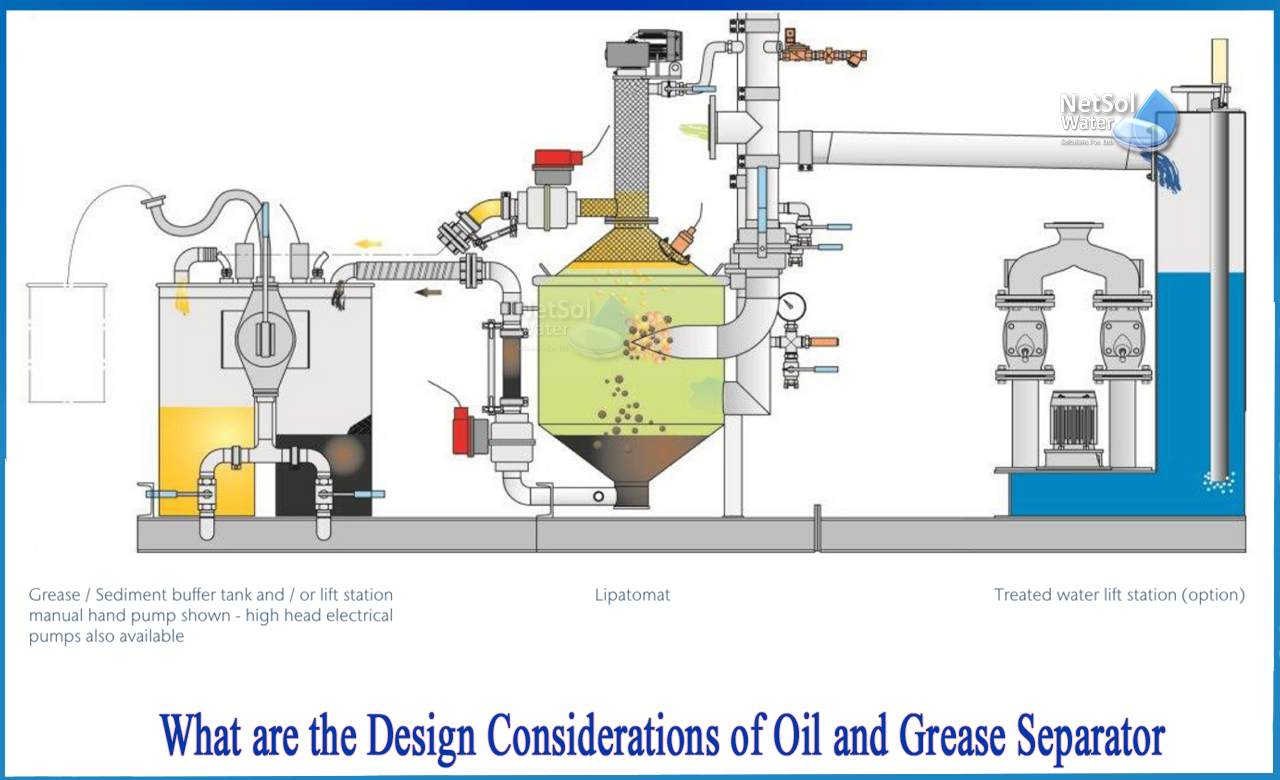What are the design considerations of Oil and Grease separator?
Installing and using a grease interceptor that is appropriately constructed and scaled for the kind and size of the business is a critical step in ensuring that the facility does not contribute to sewer system problems or experience back-ups within the facility. When analysing grease interceptor design and capacity requirements, food service establishments should weigh the costs and benefits. While a smaller capacity grease interceptor may have a lower initial capital investment, pumping and maintenance costs may rise. Plans for future expansions should be evaluated because menu expansion, seating capacity increase, or menu modifications affect the grease interceptor's effectiveness.
Application:
Grease interceptors are primarily employed in the treatment of kitchen wastewater from Food Service Establishments and other large-volume organisations. High organic loads, such as FOG and dissolved particles, as well as detergents and suspended solids, are common influences on grease interceptors. Grease interceptors are rarely used to treat sanitary wastewater. High-solids-loading wastewater should not be discharged into grease interceptors because it will degrade interceptor function and dramatically increase solids accumulation and the need for regular pumpout.
Criteria for Basic Design:
Grease interceptors should be installed as close to the serving fixture(s) as possible. It must be kept in a convenient location for inspection, cleaning, and removal of accumulated grease at all times.
Unless OCSD approves in writing, the minimum grease interceptor size is 750 gallons and the maximum size is 1500 gallons.
-The inlet compartment must be 2/3 of the interceptor's total capacity and must always be longer than the interceptor's maximum inner width.
-The capacity of the outlet compartment must be at least 1/3 of the overall interceptor capacity.The liquid depth must not be less than 2 feet 6 inches and must not exceed 6 feet.
-A manhole over the inlet and a manhole over the exit shall give access to each grease interceptor. For interceptors longer than 20 feet, an access manhole is required for every 10 feet of length. Manholes must extend to the ground level, having a minimum diameter of 24 inches or a square opening, and a gasketed cap at the ground level.
-A baffle tee or similar flow device having a minimum crosssectional area equal to the required cross sectional area of the inlet shall be installed at both the inlet and the outlet. Each baffle must extend at least 4 inches above the liquid level to within 12 inches of the interceptor's internal floor.
-At least 6 inches above the liquid level, enough partitions or baffles must be installed. Flow from the inlet compartment to the outlet compartment must pass through a quarter bend, or a similar device with a cross sectional area comparable to the inlet into the interceptor, and must extend to within 12 inches of the inside floor.
-The free vent area of the inlet, exit, and primary baffle shall be equal to the required cross-sectional area of the inlet pipe.
For more details regarding construction, structural, and material requirements, consult Netsol water and get your oil or grease chamber installed.
Netsol Water is Greater Noida-based leading water & wastewater treatment plant manufacturer. We are industry's most demanding company based on client review and work quality. We are known as best commercial RO plant manufacturers, industrial RO plant manufacturer, sewage treatment plant manufacturer, Water Softener Plant Manufacturers and effluent treatment plant manufacturers. Apart from this 24x7 customer support is our USP. Call on +91-9650608473, or write us at enquiry@netsolwater.com for any support, inquiry or product-purchase related query.



